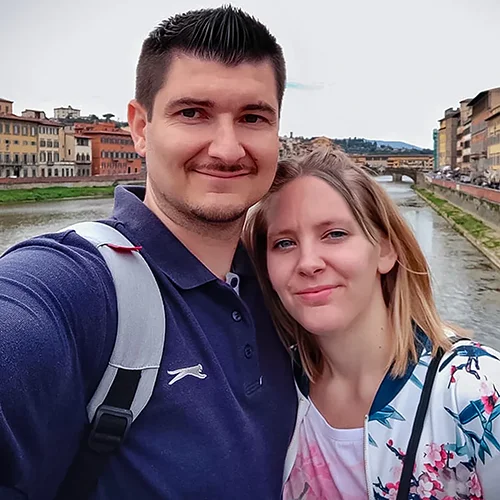Sagrada Família: history, construction project and architecture
Sagrada Família: history, construction project and architecture
Sagrada Família: history, construction project and architecture
Sagrada Família: history, construction project and architecture
4. September 2024
Feedback: 0
The Sagrada Família is one of Barcelona’s most iconic landmarks and is world-renowned for its impressive architecture. Designed by the famous architect Antoni Gaudí, the church is a masterpiece of modernism and attracts millions of visitors from around the globe. In this article, we’ll give you a closer look at the history, construction project, and architectural features of the Sagrada Família.
History of the Sagrada Família
The history of the Sagrada Família begins in the late 19th century. Construction on this monumental church started in 1882 after the building permit was granted by the city of Barcelona. Francisco de Paula del Villar initially planned the project, but in 1883, Antoni Gaudí took over. At the time, Gaudí was still relatively unknown, but he shaped the Sagrada Família with his unique style, transforming it into one of the world’s most significant buildings.
The original vision for the church was a neo-Gothic basilica, but Gaudí’s ideas led to a radical redesign of the original plan. He aimed to create a building that reflected both Christian symbolism and the natural beauty of nature. Although Gaudí himself never had the chance to see the completed church—he passed away in 1926 when the construction was far from finished—he left behind a magnificent and complex architectural design that continues to captivate people to this day.
The Construction Project
The construction of the Sagrada Família is a unique undertaking, spanning more than a century and still ongoing. It is often described as a „work in progress,“ with construction continuing in phases. Various challenges and interruptions have prolonged the building process. The Spanish Civil War in the 1930s caused significant delays and damage to the building and its plans.
Despite these difficulties, the construction continues. The work is carried out with respect for Gaudí’s original vision, while modern technologies and techniques are used to advance the project. The current estimate suggests that the church may be completed by 2026, in time for the 100th anniversary of Gaudí’s death, though there may be delays due to the project’s complexity and scope.
Architecture and Design
The architecture of the Sagrada Família is a fascinating example of modernism, which was popular in the late 19th and early 20th centuries. Gaudí’s design combines a variety of styles, including neo-Gothic elements and organic forms that reflect nature. The church is renowned for its unique towers, detailed facades, and innovative architectural features.
The Towers
A total of 18 towers will crown the Sagrada Família, each carrying a special meaning. Divided into three groups, the towers represent the four Evangelists, Mary, and Jesus. The Jesus tower, standing at around 172 meters, will be the tallest of all. Designed with a unique, asymmetrical shape, the towers evoke the geometric structures seen in crystals and plants.
The Facades
The Sagrada Família features three impressive facades, each representing a significant theme:
◉ The Nativity Facade (Fachada del Nacimiento): This facade is Gaudí’s first completed work and depicts a richly detailed representation of the birth of Jesus and creation. It is characterized by organic forms and intricate sculptures.
◉ The Passion Facade (Fachada de la Pasión): This facade was added later and depicts the Passion and Crucifixion of Jesus. It features a more austere and geometric style, creating a stark contrast with the Nativity Facade.
◉ The Glory Facade (Fachada de la Gloria): This facade, still under construction, will be the main facade of the church and will depict the glory of God and the Last Judgment. It is set to be the central and most impressive facade of the Sagrada Família.
The Interior
The interior of the Sagrada Família is equally as impressive as its exterior. Designed in the shape of a Latin cross, the cathedral features interior columns that resemble trees, symbolically supporting the heavens. Elaborate mosaics and colorful stained glass adorn the ceiling, scattering light in breathtaking patterns throughout the building.
Significance and Influence
The Sagrada Família is not just an architectural masterpiece, but also an important cultural and religious symbol. In 2005, it was declared a UNESCO World Heritage Site and stands as a key example of modernism in architecture. The church attracts tourists from all over the world and serves as a major center for religious ceremonies and spiritual gatherings.
Gaudí’s work has had a lasting impact on architecture and art, and his innovative ideas and techniques have inspired countless architects. The Sagrada Família remains a symbol of creative vision and the unyielding determination to create an extraordinary work of art.
Conclusion
The Sagrada Família is far more than just a church—it is a monumental testament to creativity, faith, and dedication. From the initial designs to its ongoing construction, it embodies the pursuit of beauty and perfection in architecture. Antoni Gaudí’s masterpiece is a captivating example of the fusion of history, art, and architecture into a single building.
The Sagrada Família is a must-see in Barcelona, impressive both in its architecture and its deep cultural and historical significance. It is a symbol of human striving for grandeur and beauty that deserves to be admired and respected.
Have you visited the Sagrada Família, or are you planning to? Share your experiences and thoughts in the comments! Find more information HERE.

Wir sind zwei deutsche Auswanderer und auf emigres-life nehmen wir Dich mit auf unsere Reise in ein neues Leben.
In unserem Projekt schwingt das Pendel meist in Richtung stressig oder chaotisch und weniger in Richtung tiefenentspannt.
Wenn du also wissen willst, in welches Fettnäpfchen wir als nächstes treten oder welche Hürden vor uns liegen und wie wir sie überwinden, dann bleib dran.
Nächster Blogpost
Ananas und Mercadona – Ein Fruchtiger Flirttrend erobert Spanien



 Pin it!
Pin it!

